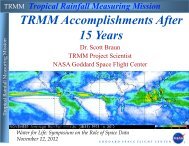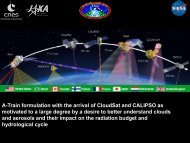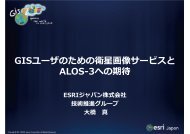ALOS Data Users Handbook
ALOS Data Users Handbook
ALOS Data Users Handbook
You also want an ePaper? Increase the reach of your titles
YUMPU automatically turns print PDFs into web optimized ePapers that Google loves.
Meantime, global environmental problems, as symbolized by the Kyoto Protocol, are moving from the phaseof merely discussing evaluations of the magnitude of the impact and elucidating the mechanism ofoccurrence to the phase of discussing countermeasures and consensus-building, and implementing practicalstrategies. With respect to reducing greenhouse gases emissions, for instance, preservation of forests isconsidered to be an effective measure to collect and solidify carbon dioxide, in addition to carbon taxes,emission right trading, development of energy conservation technologies, etc. As forest preservation andrehabilitation policies are closely related to localities, and are thus considered to necessarily create directconflicts of interest with local communities, it is a prerequisite to have harmony with local needs in order toimplement environmental policies in a smooth and effective manner. Any global policy that brings with itsignificant disadvantages to local residents will not be sustainable. Consequently, locally collected data onthe area in question is required to realize policies from a global viewpoint. The objectives of stabilizing foodproduction and mitigating disaster risks through preservation and sustainable use of land and water resources,as well as maintenance of biological diversity through preservation of eco-systems, in particular, are rightlythe essential issues of concern for local planning and administration, which have long been pursued inindividual regions.To establish a realistic environmental policy, while keeping harmony between the requirements from a globalviewpoint and the needs of a locality, it is necessary and important to have detailed local data, which haveglobal coverage and at the same time can reflect local needs.The data obtained through <strong>ALOS</strong> are considered to provide an effective solution to satisfy such needs. Bydemonstrating the entire picture of the <strong>ALOS</strong> Project and, at the same time, by providing a variety oftechnological information on satellites and land systems in this paper, we expect to be able to contribute topromoting the further use of <strong>ALOS</strong> data.March 2008Earth Observation Research and Application CenterJapan Aerospace Exploration Agency


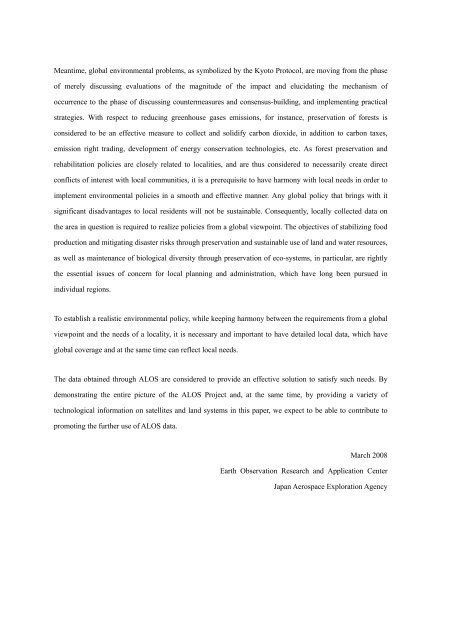
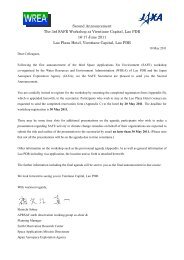
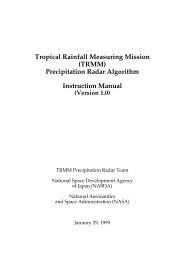

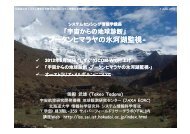
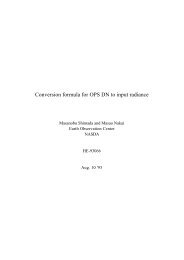
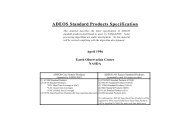
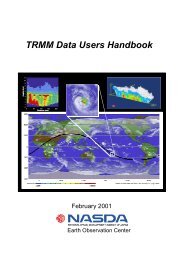
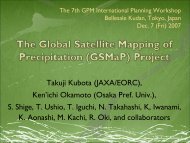
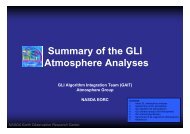
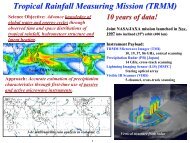
![4.12.2a_Tibet_Wu Guoxiong Tibet-CEOP.ppt[]](https://img.yumpu.com/35802437/1/190x135/4122a-tibet-wu-guoxiong-tibet-ceopppt.jpg?quality=85)
